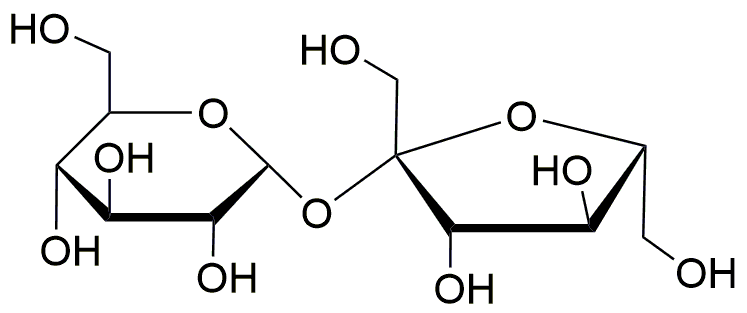Sucrose is widely utilized in research focused on:
- Food Industry: As a natural sweetener, sucrose is extensively used in food products, enhancing flavor and improving palatability. Its ability to dissolve easily makes it ideal for beverages and baked goods.
- Pharmaceuticals: Sucrose serves as an excipient in drug formulation, helping to stabilize active ingredients and improve taste in liquid medications, making them more acceptable for patients, especially children.
- Biotechnology: In cell culture media, sucrose acts as an osmotic agent, promoting cell growth and viability, which is crucial for research in genetics and microbiology.
- Cosmetics: Its humectant properties allow sucrose to retain moisture, making it a valuable ingredient in skincare products, enhancing hydration and texture.
- Fermentation Processes: Sucrose is a primary substrate for yeast fermentation, widely used in the production of alcoholic beverages and biofuels, providing a cost-effective and efficient energy source.
General Information
Properties
Safety and Regulations
Applications
Sucrose is widely utilized in research focused on:
- Food Industry: As a natural sweetener, sucrose is extensively used in food products, enhancing flavor and improving palatability. Its ability to dissolve easily makes it ideal for beverages and baked goods.
- Pharmaceuticals: Sucrose serves as an excipient in drug formulation, helping to stabilize active ingredients and improve taste in liquid medications, making them more acceptable for patients, especially children.
- Biotechnology: In cell culture media, sucrose acts as an osmotic agent, promoting cell growth and viability, which is crucial for research in genetics and microbiology.
- Cosmetics: Its humectant properties allow sucrose to retain moisture, making it a valuable ingredient in skincare products, enhancing hydration and texture.
- Fermentation Processes: Sucrose is a primary substrate for yeast fermentation, widely used in the production of alcoholic beverages and biofuels, providing a cost-effective and efficient energy source.
Documents
Safety Data Sheets (SDS)
The SDS provides comprehensive safety information on handling, storage, and disposal of the product.
Product Specification (PS)
The PS provides a comprehensive breakdown of the product’s properties, including chemical composition, physical state, purity, and storage requirements. It also details acceptable quality ranges and the product's intended applications.
Certificates of Analysis (COA)
Search for Certificates of Analysis (COA) by entering the products Lot Number. Lot and Batch Numbers can be found on a product’s label following the words ‘Lot’ or ‘Batch’.
*Catalog Number
*Lot Number
Certificates Of Origin (COO)
This COO confirms the country where the product was manufactured, and also details the materials and components used in it and whether it is derived from natural, synthetic, or other specific sources. This certificate may be required for customs, trade, and regulatory compliance.
*Catalog Number
*Lot Number
Safety Data Sheets (SDS)
The SDS provides comprehensive safety information on handling, storage, and disposal of the product.
DownloadProduct Specification (PS)
The PS provides a comprehensive breakdown of the product’s properties, including chemical composition, physical state, purity, and storage requirements. It also details acceptable quality ranges and the product's intended applications.
DownloadCertificates of Analysis (COA)
Search for Certificates of Analysis (COA) by entering the products Lot Number. Lot and Batch Numbers can be found on a product’s label following the words ‘Lot’ or ‘Batch’.
*Catalog Number
*Lot Number
Certificates Of Origin (COO)
This COO confirms the country where the product was manufactured, and also details the materials and components used in it and whether it is derived from natural, synthetic, or other specific sources. This certificate may be required for customs, trade, and regulatory compliance.

